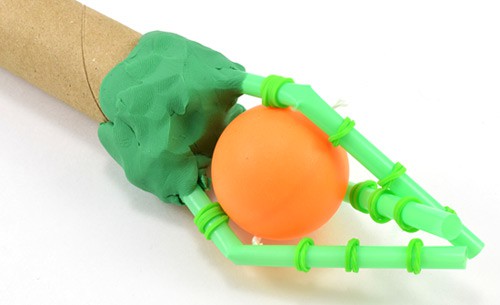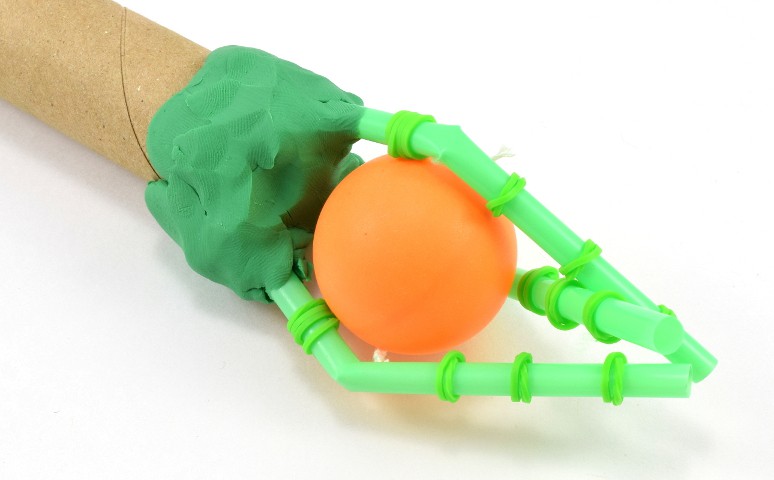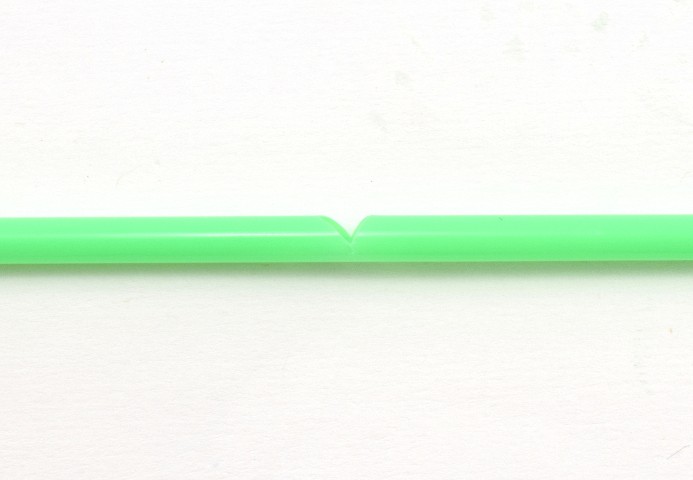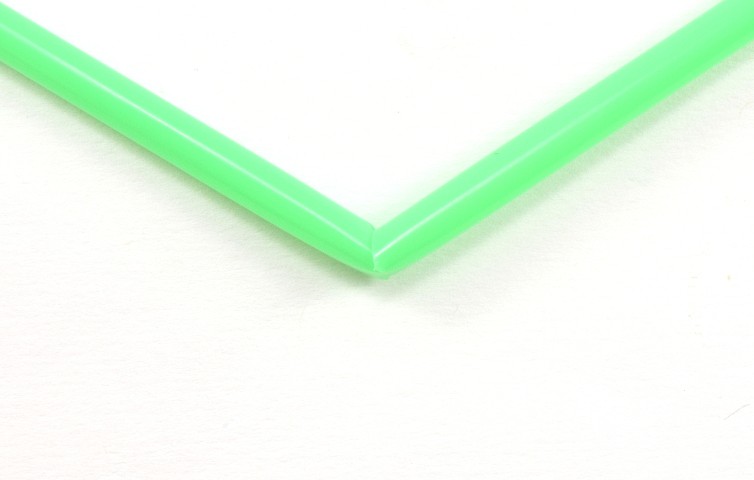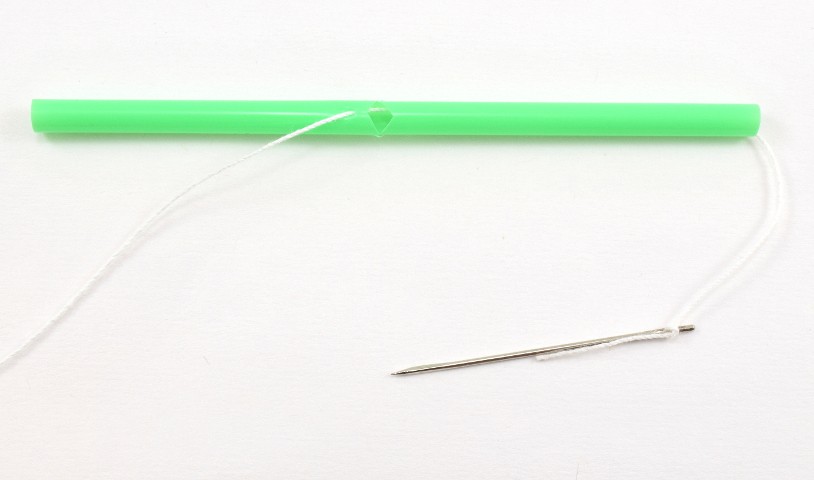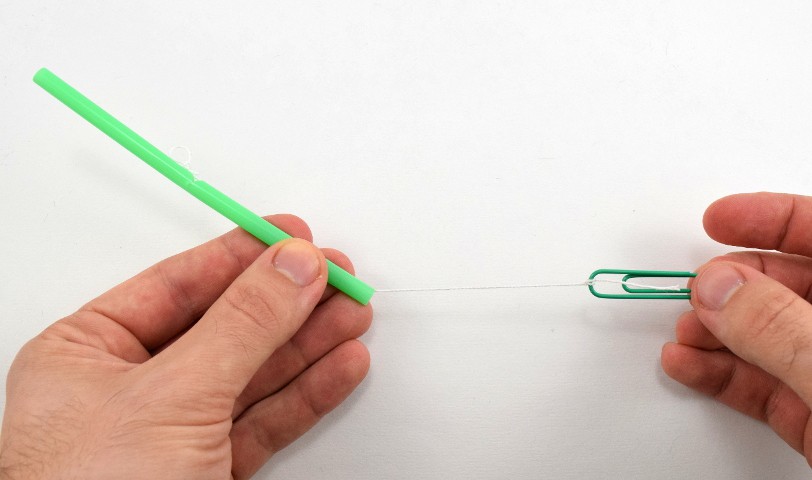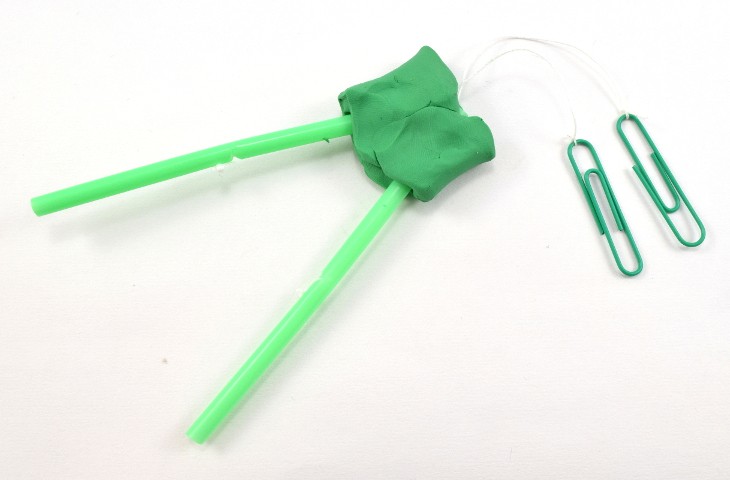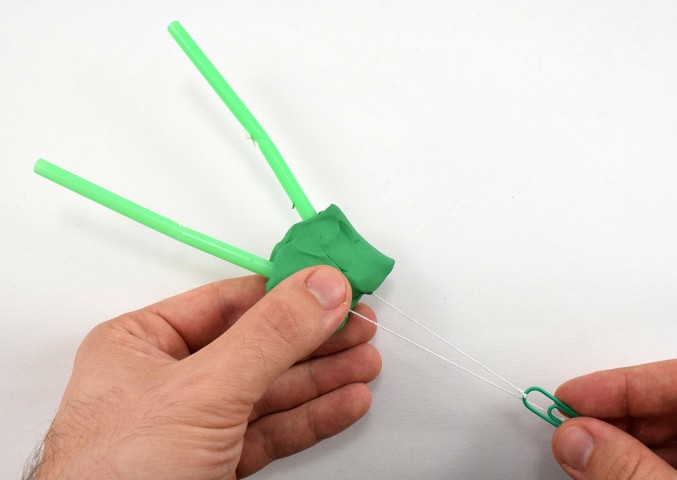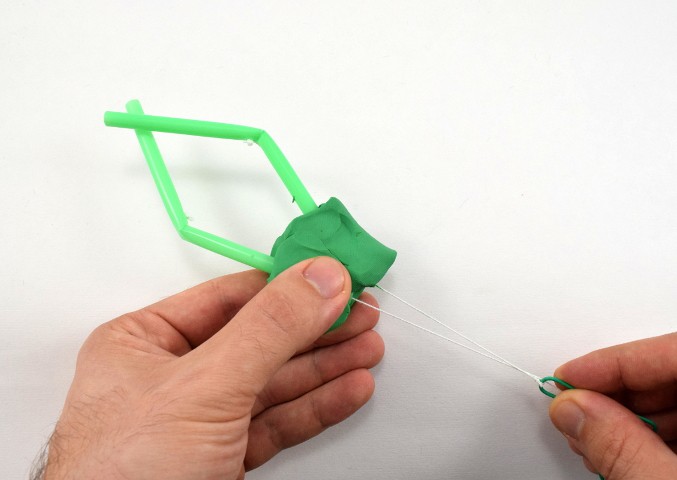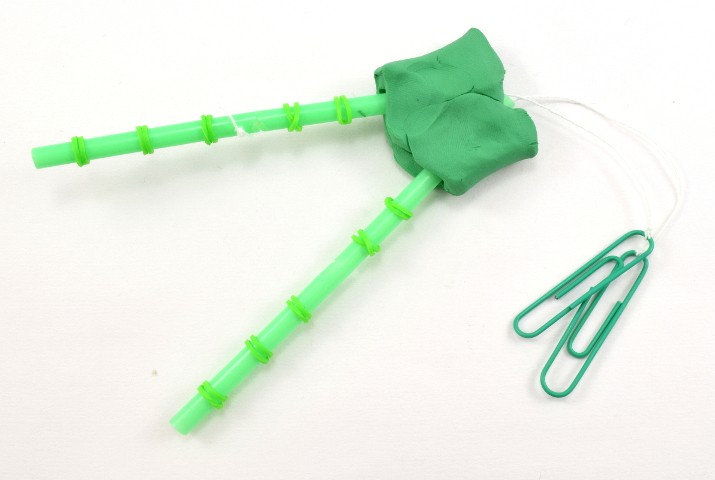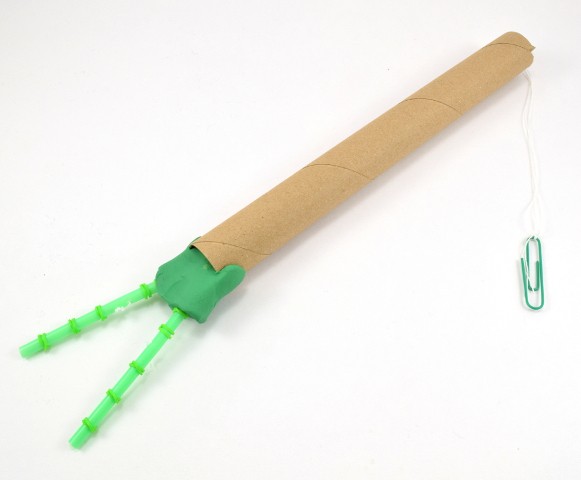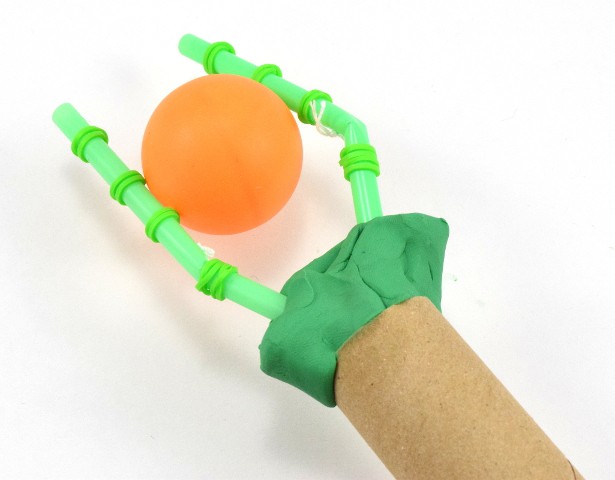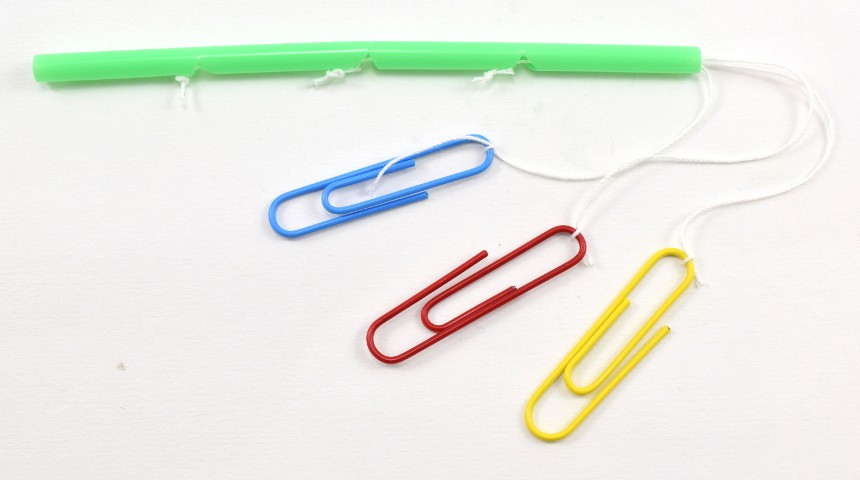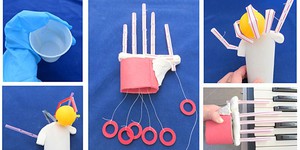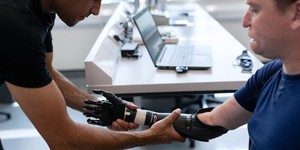Summary
Introduction
Do you know anyone who has had a hand or an arm injured in an accident? What if you could build them a robotic hand to help them accomplish everyday tasks like writing, picking up a glass, or opening a door? This activity will show you how to build a simple robotic hand using common household materials.Materials
Note: This is an engineering design project. The procedure will show you one way to build a robotic hand, but this is just a suggested list of materials to get you started. You can modify the design and substitute other materials.
- Modeling clay. The clay can be reusable, air-dry, or oven-dry.
- Drinking straws
- String
- Tweezers
- Small rubber bands
- Paper clips
- Scissors
- Needle
- Cardboard tube
- Assorted objects to grasp
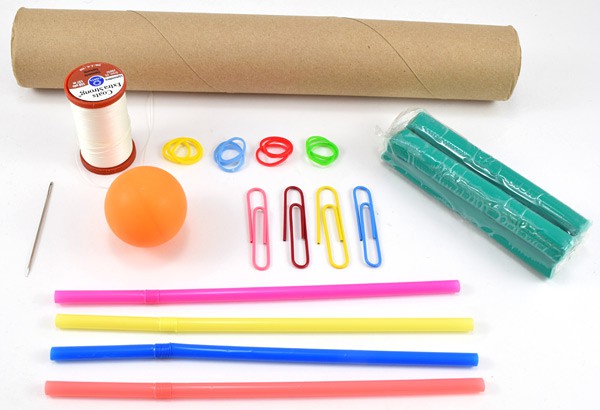 Image Credit: Ben Finio, Science Buddies / Science Buddies
Image Credit: Ben Finio, Science Buddies / Science Buddies
Instructions
- Follow along with this slideshow to build a simple robot hand with two "fingers" and one "joint" on each finger. However, note that this project follows the engineering design process. This is just a simple design to get you started. You can modify, test, and improve upon the design to make a better or more complicated robot hand.
- Keep testing your robot hand and try using it to pick things up. Try objects of different shapes, sizes, and weights. Do you notice any problems with your design? Do you have trouble picking up certain items?How could you change your design to make it better?
- Try improving your design so it can do a better job picking up different objects. Is it better if you control all the fingers with one string, or individually? What if you change the angle of the fingers relative to each other, or the location of the joints? What else can you change?
- If you are using air-dry or oven-bake clay, finalize your design before you let the clay dry. Caution: adult supervision is required for oven-bake clay. Putting plastic drinking straws in the oven may cause them to melt, depending on the baking temperature for the clay. If you notice any funny smells or see your straws melting, immediately turn off the oven and remove the robot hand.
What Happened?
Using the materials suggested in this activity, you should be able to build a robotic hand that can pick up small, lightweight objects. Objects that are slightly squishy or have rough textures (like a block of foam) may be easier to pick up than objects that are hard and smooth (like a table tennis ball). You may find it difficult to pick up heavy objects (like a coffee mug) because the straws are not sturdy enough and will bend backwards. The shape and variety of objects that you can pick up will depend heavily on how many fingers your hand has and how you arrange them. For example, you could build a hand that is very good at picking up paper cups, but has a hard time with table tennis balls, or vice versa. Building a robot hand that can easily pick up a wide variety of objects, like a human hand can, is a very difficult challenge that professional engineers are still working on to this day!Digging Deeper
Your hand is made up of bones, muscles, joints, and tendons. The bones provide the rigid structure for the hand, like the straws in this project. The joints provide places for the fingers to bend, like the notches in your straws. The tendons pull on the joints to make the different segments bend, just like the string in your robot hand. The muscle in your robot hand is still provided by a human, since ultimately you are the one pulling on the paper clips. Real robotic hands have electric motors in them that act like muscles.
The science of developing robotic hands, along with other artificial limbs and organs, is called prosthetics. Scientists, engineers, and doctors work together to develop artificial body parts as replacements for people who lose organs or limbs due to accidents or disease. Try searching online for other types of prosthetic limbs and organs that have been developed. You might be amazed at what you find!
Ask an Expert
For Further Exploration
- Can you build a hand out of sturdier materials that can lift heavier objects? A trip to the hardware store might help you discover what materials you could use.
- Can you expand your robotic hand so it includes other joints? What about a wrist, or an entire arm including an elbow and shoulder?
Related Resources
Project Ideas
Links
- Blog Post: Grasping with Straws: A Robotic Hand



